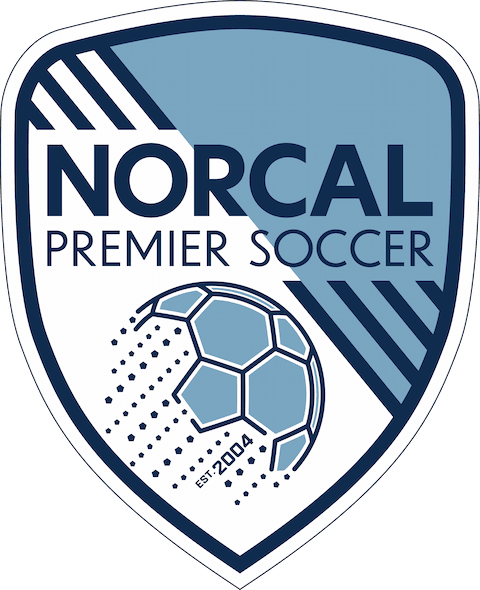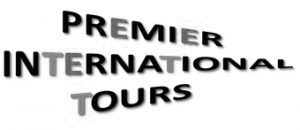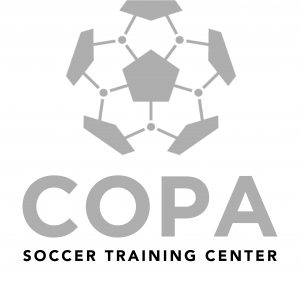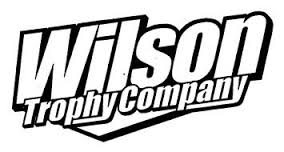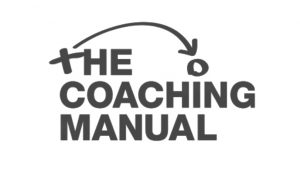Q&A: PDP Head Scout Ian Mork

Note: NorCal Premier Soccer regularly sits down with an influential figure in the youth soccer landscape to pick their brain about a variety of different topics that are relevant in the current soccer environment in the United States. For this edition we spoke with NorCal Player Development Program Head Scout Ian Mork. A former player in the college and indoor game in the United States as well as in the Netherlands and Belize, Mork has worked for various youth clubs in the area as well as coached professionally in Belize. A longtime member of the Belize youth national team staff, Mork led the Belizean senior team during two different stints. He currently works as a scout for US Soccer, as an assistant coach for the US Club Id2 international teams, and his main work is with NorCal, where he is a member of the technical committee and the head coach for the Boys Selection teams that travel internationally and play against professional youth teams often.
NorCal: Even though you didn’t play for a big program in college, you still ended up pursuing a professional career and playing in several different places. What was your journey like and can you describe how you developed as a player?
Mork: I grew up playing in Wichita, Kansas and I always had the ambition to become a professional player. At a young age, I built a goal in my yard to practice on my own and (as much as possible) I invited my friends to shoot on the goal or play pick-up soccer at a nearby park. I surrounded myself with passionate players/friends with similar ambitions. Watching soccer on TV was a challenge during those days and we would usually order VHS tapes to watch highlights of World Cups or instructional videos, like Pele: The Master and His Method, which had a huge influence on my development. Then, when my family finally had cable TV, I would watch and record the Italian Serie A in Spanish on the Univision channel. I surrounded myself with the game as much as possible and for a few years when I was 13-15 years old, my mom would drive me across town, so I could play for one of the better club teams in my age group. Many of my club teams would travel to tournaments throughout the year and I also played on different indoor teams during the winter. In my Senior year of high school, I was captain of the team and we won the High School State Championship. We were the first team from Wichita to hold that honor and that team included several friends who formerly played pick-up soccer at the park with me. From those early years, I was determined to learn and put myself in challenging environments, so I could reach my full potential. I was recruited (on a scholarship) to college, right out of high school, for the University of Southern Colorado, which was NCAA Division II. It was a competitive conference and as a freshman, I was named as one of the captains. I made the all conference team, which I was really proud of. During our preseason, the coach informed me that he wanted to play as a sweeper, which was a new position for me — I had always played center midfield. It was an enlightening experience and it helped me to read the game better. The Coach, Ken White, was a former professional player in the NASL who was very passionate about the game and he also helped me recognize the importance of fitness to play at a higher level. Despite the success I had on the field, I did not connect well with the environment and the school. I ended up transferring to Johnson County Community College in Kansas City, so I could continue to play the following season (the 4-2-4 NCAA transfer rule). At Johnson County, I was also named captain and mainly played as a defensive midfielder. We had a great season and we finished fifth in the nation. The coach was Jim Schwab, who was also a former professional player. I was really motivated to play for him and he helped me improve on my leadership skills. His faith in my ability also helped build my confidence. From there I was recruited to play at Sangamon State in Springfield, Illinois, which was an NAIA program. The coach, Aydin Gonulsen, had already won several National Championships and I was excited to play for his program. I continued to play defensive midfield and we had a great team. We finished third in the nation and the following year the team won the national championship. Unfortunately, my mom was diagnosed with cancer my junior year and I elected to move back to Wichita, Kansas, for what would have been my senior year, to be with her and my family. I still feel it was the right decision. I started playing with the Wichita Wings as a developmental player immediately and I became a professional player the following year. Although, I didn’t have the ambition to play indoor soccer as a professional, I did have the desire to play at the highest level possible, so I was ecstatic to make the team and sign a professional contract. And, of course, my mom had the opportunity to watch all of my games again! This was a few years before MLS, so there were a ton of top players in the league and I was learning every day. During those years with the Wichita Wings, I played with Shawn Blakeman. He invited me to work camps in our off-season and he mentioned the Ziemer Brothers Camps as a possibility. I took him up on his offer and as soon as I met the Ziemer Brothers, we realized we grew up in a similar fashion — teaching ourselves the game through backyard soccer during our youth years. I worked with them through the summer and Andrew Ziemer mentioned the possibility of playing and studying in Holland. \ I missed the outdoor game and I always dreamed of playing in Europe, so it was an easy decision for me. We made it happen and I went to play for Quick in Den Haag. It was a top amateur level and an amazing experience for me. To be immersed in a true voetbal (soccer) culture was a dream! That experience was probably the biggest influence on my personal development as a player and eventually as a coach. The structure of the club environment was designed to allow every player and coach to reach their full potential. There was constant competition for a position within the squad and constant competition for the team to be promoted or relegated. It was incredible and I soon realized how far behind I was in my knowledge and understanding of the game, especially on a tactical level. I was in the player pool for the first team, but I mainly played for the second team and we won our league that year. From that moment on, I realized that it would be tough for me to make a living at the game in the coming years. I was already 25 years old and I was competing with talented 19-20 year old Dutch players who were also aspiring to reach a higher level in the game. During that season, I enrolled in a four month KNVB coaching course and started my path to become a coach in the future.
NorCal: What are some things that you learned from your experience playing in the Netherlands that you still use in your coaching today?
Mork: I learned to create a training environment and game environment that always includes intensity and competition

Ian Mork
within the player pool to earn a starting position for the games. In the Netherlands, every training was an opportunity for you to prove your worth and your performance in every game would either help you secure a position in the squad or force you to battle for a spot on the roster for the game. We have tried to mimic a similar environment in the NorCal PDP. As I mentioned, I was in the player pool for the first team of Quick Den Haag butI played a majority of the weekend games with the second team. Every once in a while, I would be a substitute for the first team and get a few minutes in one of their games. The selection process was based on my performances in the weekly training and the games for the second team. Every single week, every moment, it was a competition to try to secure your place within the group. If you’re starting or if you’re a substitute. As an example: I was actually at training one night with the second team and the first team was playing a practice game against ADO Den Haag, the professional team. One of our leaders said, “hey we had an injury in the first half and they’ve asked you to come over and be involved in the game.” I drove across town with one of the assistant coaches and I played in the game against ADO Den Haag. This was one of the highlights of my playing career. These are the opportunities that can arise because of their structure and the environment. It’s merit based and I feel like it’s something that we’re always trying to mimic here in the US but it’s a huge challenge for our clubs to create a similar environment. Most of the youth players in Europe grow up with a similar structure and I believe it forces all of them to really maximize their potential. I think it is a huge challenge for us to create a similar environment for our talented youth players here in the U.S.
NorCal: To extend your career, you went down to Belize to play professionally and then ended up coaching as well. Tell us about that experience.
Mork: I was 28-years-old and I was considering an opportunity to try out for a team in the second Division of Costa Rica. I contacted my former roommate, Rene Montero, to plan a visit to Belize on my way to Costa Rica. Rene said, “forget Costa Rica, come here and I’ll set you up as a player-coach with a first division team in Belize.” He organized a meeting with the San Pedro Dolphins and that’s exactly what they said, they wanted me to be a player-coach. Rene was a top footballer in Belize and he was well respected, so it should not have surprised me, but I was new to the country. That year was a great experience, but difficult. The management signed many top national team players, but they lived on the mainland and rarely joined us for training and they were expected to play on the weekends. The challenges were too extensive with the management on top of trying to balance the player/coach role, so I prepared to leave at the end of the season. Rene was still my confidant and he informed me that the owner of the team in the capital city, Belmopan, wanted to meet to discuss the possibility of working with them the following season. We set up a meeting and the owner basically asked, “what would it take for you to come back here next season?” As I mentioned, I didn’t have the greatest experience with the management in San Pedro, especially concerning their integrity and compensation for the staff and players. Considering my experience in San Pedro, I proposed a healthy contract for myself and suggested we also have written contracts for the players, which was not the norm in Belize. He agreed but didn’t want me to be a player-coach, just wanted me to just be the head coach. I accepted and began my professional coaching career at the age of 29. I still played in the second division, when time permitted, but I was focused on reaching the Concacaf Champions League with a Belizean Team. The team was the Belmopan Bandits and they had finished in seventh place the season before. We finished in second place and I had achieved my goal to reach the Concacaf Champions League. I was voted as the ‘Coach of the Year’ and the Football Federation of Belize mentioned my name in the media as a potential candidate to work with them in the future. By the end of the season, surprisingly, there were a few members of the management trying to influence the player selection for games, so, unfortunately, I left the team.
NorCal: Eventually you ended up as the full Belize National Team coach and got to coach in the Concacaf Gold Cup. What’s it like, especially with a smaller nation that doesn’t necessarily have the funds to compete against a Mexico or USA, to coach a national team like this and what were the challenges?
Mork: Oh, man. There were a ton of challenges. In 2003, I made an agreement with the FFB President to return to Belize in 2004, as the U17 National Team Coach and the Director of Youth Development. Before my arrival, the President informed me that they actually wanted me to serve as the Technical Director for the FFB. I held this position from the beginning of 2004 until the middle of 2006. During those two-and-a-half years, I was also the Head Coach of the (Male) U17, U20, U21 National Teams and the Assistant Coach for the ‘A’ National Team. My immediate work was to help select and prepare for two games against Canada, which were the qualifying games for the 2006 World Cup. And in 2006, the U21 Team beat El Salvador 2-0 in the Central American Games. This was the first victory for a Belize Selection on the International stage and it is still one of my proudest moments as a head coach in Belize. That team and those players were top class and we were playing great football. I have always felt that the international football players of Belize have never received enough credit for their accomplishments. Not just the accomplishments of winning or qualifying for a tournament, but the mental strength and commitment to the game, despite the incomprehensible challenges they often faced. Rightfully so, they were always demanding to be compensated better and there was rarely a unified agreement on their compensation, especially for the World Cup Qualifying games against Mexico when there were 50,000 spectators at both games. The players put their heart and soul into representing the flag of Belize and they deserve more credit! As an example, in 2008 they called me back again to coach against Mexico in the World Cup qualifying games. In preparation for that, we played 2 closed door games against Costa Rica (in Costa Rica) and only lost 4-3 and then we also played against Honduras and we only lost 2-0. We played really well and the players were a tight-knit group and they were open to my coaching philosophies. Before those trips to Honduras and Costa Rica, the players refused to participate and board the bus, because a month prior, we went to Cancun and Chetumal in Mexico. Think about it, we were going to play friendly games against clubs in Mexico to prepare to play against the Mexican National Team to qualify for the World Cup. That in itself was puzzling, but we wanted games and we needed to play outside competition. Anyway, the conditions the players were exposed to on that trip were appalling! We went to play a practice game in Cancun and we had to fight to have proper nutrition and water before the game. The players didn’t even have the opportunity to shower after the first game. The stadium didn’t have proper facilities and they were forced to get on the bus and travel to Chetumal that night, because there was a mix-up with the hotel we were set to stay at. We traveled into the night and finally reached another hotel the next morning in Chetumal, so we could play another practice game. It was unbelievable. I felt so powerless and here I am trying to motivate the players and at the same time, trying to use different tactics, so we don’t give anything away to all of the Mexican National Team Scouts that were watching. I think it is important to recognize a few of the experiences the players went through before the 2013 Gold Cup, because by the time I was called back to coach at the Gold Cup, I had known and worked with most of the players and staff for almost 10 years. However, in 2013 there was a new president and some new management at the FFB. I still knew and trusted most of them, but the politics at that time and some of the internal FFB power struggles were way beyond something I could even control or influence much. New challenges were definitely on the horizon and few, if any, of these challenges had anything to do with football! There was one particular person, who picked me up from the airport to start my campaign as head coach for the Gold Cup and during our drive he told me that this was his National Team. I was immediately concerned about his agenda and influence on the team. He was the manager of the national team at the time and he was in charge of taking care of the players and providing a proper environment for them to prepare to play in the Gold Cup. Once again, the players were exposed to appalling standards. There were many people inside of the Federation, especially Sergio Chuc, Cruz Gamez and Marlon Kuylen, who were doing their best to provide for the players, but there was never a unified agreement with the players. The compensation for the players time and participation with the National Team was always an issue, even until the day we left for the U.S. The lack of proper equipment, including soccer boots, physical therapists, the mattresses, fans and food were never adequate or sufficient. The players were asked to live at the federation headquarters, so we could have two or three training sessions per day and make the most of the little preparation time we had. During the preparation months, I was there for a few weeks in April and May and at the beginning of June, I stayed in Belize until the beginning of the Gold Cup.
So, amongst all of these challenges off the field, I still had to find a way to select the team and prepare them. We did our best to get practice games against International opponents and we finally set up a last minute game against Guatemala (in Guatemala). We tied the game 0-0 and had a decent game. Another huge challenge during our preparation was to convince the team and staff about the best way of playing and the tactics we would need to prepare for to compete against the U.S. The U.S. team was our first opponent and I felt it was important to adjust the tactics to compete against them. Remember, in order to qualify for the Gold Cup, Belize had to finish in the top five of UNCAF. The former coach, Leroy Sherrier-Lewis ,did a great job to qualify and he should be given full credit, but his way of playing with the team against the Central American teams would need some adjustments to play against the U.S. in my opinion. This is what I was hired to do and I immediately tried to communicate what I thought would work best. At this point, the challenge to slightly adjust our way of playing was much more difficult than I could have ever imagined. Some of the same players who defeated El Salvador in 2006 and played against Mexico in 2008 played in a different system and I needed them to help me convince the other players, but they didn’t have faith in any adjustments either. Basically, the entire country and most of the teams in the first division ended up adopting the former system and way of playing from Sherrier-Lewis and that was the only way they wanted to play in the Gold Cup. Looking back, I blame myself and I should have found a way to use that system in the best way possible, but I never felt it was going to be effective against the U.S. way of playing. Against Costa Rica, definitely! But against Cuba, I wasn’t convinced either. Both the U.S. and Cuba played with true wingers and they attacked through the outside and I didn’t think we had the players to cover those spaces. As a result, we would be exposed too much. Probably best to watch those games again and everyone can have their own opinion about the best way to play against the U.S. and Cuba.
Another big challenge, and thank you for asking and allowing me to tell my side of this story, was the size of the country. From my experience in Belize, which is a very small country, when players have played a lot of games internationally, they build a reputation within the country, rightfully so. Consequently, regardless of their current form, fitness, sharpness, tactical understanding, the country, the National Team staff, the National Team delegation, they all expect those players to play in the big games. I was a little surprised by this in the Gold Cup, because I thought everyone would have a little more faith in my ability to choose the best team for the moment. I had experienced this in the past.This quality of compromising in order to keep the overall environment healthy and just to try to keep everyone still pushing together and not creating any divisions. Looking back, I would have started a few different different players against the U.S. and regardless of our way of playing, I think it would have made a difference in the game, especially when we were trying to keep possession and create chances to score.
And a final challenge I faced and potentially the biggest, was the amount of pressure and attention the players received in Portland, before our first game against the U.S. In my opinion, generally, the Belizean players are in their comfort zone when they play International matches in Central America. There are many similarities in those countries when you’re travelling and the attention received before those big games. Most of our Gold Cup roster had extensive experience playing International matches in Central America and they could remain composed in a new environment. We did have a few players on the roster who played professionally outside of Belize and I think they were the most confident and composed during the Gold Cup experience. There were a few exceptions for our players based in Belize for their club football, but overall, it felt like a majority of the team was overwhelmed with the energy and attention they received in Portland. They didn’t seem themselves and it felt like their minds were somewhere else. Not sure what they were thinking about or if they were just nervous, but it was evident in our training sessions. In some ways I can understand the challenge for them to stay focused. Between the new environment, media attention, the hype, the travel, the energy at the hotel and the autographs, the stakes were high. The U.S. players live like this all the time, but most of the Belize players were top amateurs/semi-pro players and some even had other day jobs. I can understand the players were nervous before the game (I think that is natural), but it felt like many of them were too nervous to be themselves and play to their full potential. Despite all of this, it did feel like our performance in the U.S. game overshadowed our second game against Costa Rica. The pressure was off a little and we only lost 1-0 on an own goal. I thought we should have had a penalty called for us and they cleared one off the goal-line at the end of the match. Unfortunately, that was our second loss and it would be almost impossible to advance to the next round, but we played great. I was really proud of the team and they deserved to receive the same amount of attention for that achievement as they were receiving before the U.S. game, but I know it doesn’t work like that.
And I have to mention, the Belize fans who traveled to Portland and Salt Lake and Connecticut were outstanding! I hope some of them get to read this, because we really appreciated their support and good vibes. They were all top class!
NorCal: Moving over towards something more NorCal specific, you’re the head scout for PDP. There are so many talented players all across the state, but what really sets a player apart to the point where you consider them for selection in the program?
Mork: First of all, it depends on their age. For the youngest ages (12 years old and younger) we’re looking for the players that express passion and joy to play. Creativity and comfort with the ball are also important qualities we would focus on. For 13 years and older, we evaluate players in 4 areas (technical qualities, tactical understanding, personality traits and physical abilities). Let me explain a little more: the technical qualities mainly involve their skill with the ball. The tactical understanding is their ability to read the game and make decisions based on different situations in the attack, defending and transition moments. Personality traits could be their competitiveness, growth mindset, are they a student of the game, leader, team player, their ambition and motivation. And for the Physical abilities, we must always consider their biological age (maturation) compared to their chronological age and that they can keep up with the speed of play and fitness required in their particular age group. So as I mentioned in the talent ID webinar series that I did, we must always consider if a player has something really special in one of those areas. As an example, if a player is already showing leadership qualities at a young age and they are encouraging their teammates or they are already trying to read the game in different situations and they are coaching their teammates, that says a lot about their character and them as a player, so if their technique isn’t that great just yet or they’re not always making the best decisions, but they’re showing this personality side and they can keep up with the speed of play physically, then you have to think that there’s something there and if this player keeps growing at this rate and they improve their technique and in the other areas, then they might be able to reach a higher level in the future. We weigh what their strengths are with what areas they need to improve and compare both to our PDP Player Profile. If we feel they can keep up with the speed of play in the PDP environment, then we select them and start the evaluation process over, every time we see them play. We use the Player Profiles of the U.S. Youth National teams as our reference, which we call a benchmark. So what a player needs to have, what qualities a player needs to have at the U15 or U16 age group, as an example. The PDP is set up to represent the NorCal clubs and we want our PDP to represent as many of the top talents as we can in Northern California. Now, a really important point to remember in the selection process is, all players develop at different ages, so if we don’t select a player, we need to keep checking in on them and we always have an open door policy when it comes to giving a player another chance to be selected in the future. We must think about potential, not just performance. As an example, an early maturing player (biologically) than players in their age group, might appear to perform better than what their actual potential is because biologically they’re a year or two older than their peers, so you’re watching them and they’re just dominating. Running past all the players and scoring goals or no one can get past them as a defender. It appears they are a top talent from their performance, but we must consider what their potential is and the advantage a player may have with early maturation. That’s where we really want to encourage our leaders, our technical leaders within NorCal to do their best to put the players, especially the talented players, to put them in the correct environment and by that we mean ensure they are always challenged in games and trainings. Similar to what I spoke about earlier in Holland, how those players, you could see at 18, 19, 20-years-old, a lot of them had spent the last 10 years in this environment where they were always trying to fight their way up and be selected all of the time even at a top amateur level. We need all of our players to feel that during their youth development years. We try to help create that environment in the PDP, but the true development is done in their club environment. Otherwise, if they spend two or three years just dominating and having an easy time every training and game, it can really be a hindrance to their development.
NorCal: Right now, no one can train in a traditional manner due to COVID-19. What advice right now would you have for players who are looking to still continue to improve and make it at the highest level?
Mork: It’s a huge challenge and I don’t know if I have the golden answer but it’s obviously a time to really polish up their technique because they have the time now to spend a lot of time with the ball on their own. Hopefully they’re able to find the time to either play against a wall or they could even play foot-volley/soccer tennis with someone. And when allowed by the health authorities (and their parents), organize pick-up games at the park or in the backyard. Spending a lot of time with the ball is very important and the more they can play pick-up and street soccer the more creative they will become once they get back on the field with their club teams. The other piece would be on the physical side, hopefully they’re able to keep their fitness levels up and find the time to ride their bikes or go for runs, or work on coordination exercises, so when they come back they’re healthy and in good shape. For us what we’ve mentioned too is the tactical aspect, which is a challenge because you can’t watch a lot, but there’s so much online where you can go back and watch games and if they can even go back and watch themselves play, that would be helpful so they could be their own critic in some of the ways that they’ve played in the past, And on the personality piece, we encourage everyone to be a positive example at home with their family and in their community. They are still representing their club and maybe they are a PDP player. We want them to keep those values with them all the time. And to be socially responsible as a citizen and follow the health guidelines. For us, that’s an important responsibility during this unprecedented time.
It’s interesting to remind everyone that, at least from my experience, there were times that I had an injury when I was playing, that set me back a month or two and I couldn’t play. I remember a few specific times coming back on the field and actually being at a little bit of a higher level, because I had been thinking about the game so much. It’s that old adage from Phil Jackson in Sacred Hoops, his book where he talks about the visualization piece that he used with the Chicago Bulls and even Michael Jordan joined in, where they would go through visualization exercises and by the time they played, they had already rehearsed many of the moments and actions in their mind. Personally, I think there’s a lot of truth to that. Might be something for everyone to keep in mind. Continue to set goals and hopefully we can get back on the field soon. We know this is a huge challenge and we all miss the field, big time! We look forward to enjoying the beautiful game with everyone in the near future. Stay safe and healthy!
